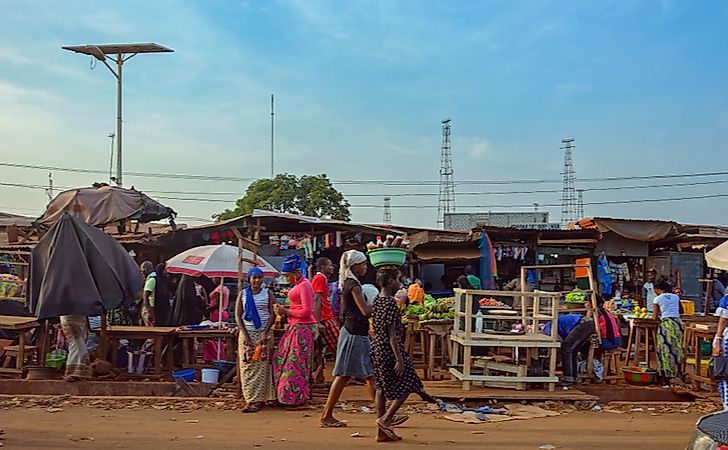8 Interesting Facts About Guinea

Guinea is a West African nation that is known for its rich mineral resources and diverse habitats and wildlife. The nation has an estimated population 12.3 million and its capital and largest city is Conakry. Although the official language of Guinea is French, the most commonly spoken languages are Fulani, Susu, and Mandinka. States that border the country include Cote d'Ivoire, Senegal, Mali, Liberia, and Sierre Leone. A series of interesting facts about Guinea are listed below.
1. Africa's fourth-largest mosque is in Guinea
The predominant religion in Guinea is Islam, which is practiced by about 90% of the country’s population. The famous Grand Mosque located in Conakry was opened in 1982. The mosque is the fourth-largest in Africa, and the largest in sub-Saharan Africa. It is a religious landmark that is capable of hosting 25,000 worshippers.
2. Guinea is often referred to as "Guinea-Conakry"
Guinea is also known as Guinea-Conakry in order to distinction it from the neighboring nations of Equatorial Guinea and Guinea-Bissau, which all contain the word “Guinea” in their name.
3. Guinea is the world’s second-largest bauxite producing nation
While Guinea is among the poorest nations in the world, it contains significant mineral deposits. The country is known to have one-quarter of the world’s bauxite reserves, as well as more than 1.8 billion metric tons of high-quality iron ore. Guinea is also known to possess large deposits of gold, uranium, and diamonds.
4. Guinea has a 320 km long coastline and iconic beaches
The coastline in Guinea has a length of 320 km (200 mi). The country also features beautiful beaches such as those at Cape Verga and Les de Los. Famous beaches in Cape Verga include Sobane beach and Bel Air beach, while beautiful bamboo beach huts can be found in Les de Los.
5. Guinea was formerly named French Guinea
Guinea used to be named French Guinea because it was a French colony established in 1891, and was part of French West Africa. Guinea was a French colony for nearly 70 years until it gained independence on October 2, 1958.
6. Female Genital Mutilation (FGM) is a serious issue in Guinea
Statistics reported by Anastacia Gage and Ronan van Rossem, associate professors at Tulane University and Ghent University, respectively, claim that 98% of women in Guinea undergo FGM. Most religions, cultures, and ethnic groups in Guinea support FCM, resulting in one of the highest rates in the world.
7. Literacy levels in Guinea are very low
As of 2017, the adult literacy rate in Guinea was 41%, causing the country to be ranked as having the 9th lowest adult illiteracy rate in the world. In Guinea, primary education is compulsory for only 6 years, after which point students may choose to continue school or drop out. Unfortunately, most students do not even reach the required 6 years of school. A primary reason for the low literacy rate in Guinea is the country's high poverty rate. With a GDP of $1180, Guinea is among the poorest countries in the world.
8. A large part of Guinea is protected
Guinea encompasses a total land area 94,926 sq mi. Of this total, 33,793 sq mi are protected for the conservation of wildlife and forests. This area under protection translates to 35.6% of the country’s size, and includes three national parks, as well as other types of protected areas, namely Badiar National Park, National Park of Upper Niger, Mount Nimba Strict Nature Reserve, Nyalama Classified Forest, and Ziami Massif.











